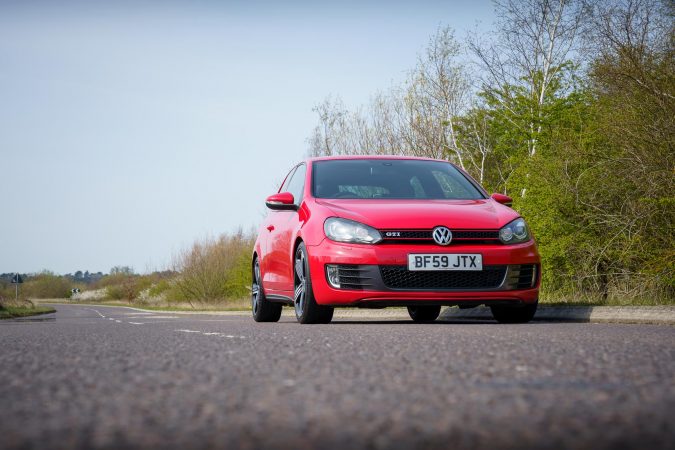The Golf GTI is and always will be one of the best second-hand purchases you can make. It’s the car which practically invented the hot hatchback segment with the Mark 1 generation, and has been dominating the segment ever since. Apart from the slight let down of the Mk4, each and every GTI so far has been nothing short of brilliant. The Golf is a great second-hand purchase as it generally doesn’t depreciate a lot after the initial hit.
The earliest Mk6 GTIs are now ten years old, however, so you have to know what you’re looking for if you want to avoid certain pitfalls associated with the Golf. The GTI is usually as reliable as the normal Golf it’s based on, but certain areas do require more attention as it’s a high-performance version of the ordinary car. Before getting into the details of how the car performs, let’s quickly look at some common issues associated with the GTI.
Known Common Issues
The biggest issue with the GTI is related to the timing chain tensioner, as anyone will tell you. If it fails it can cause the chain to jump teeth and damage the engine, which is obviously less than desirable. The OEM tensioner was updated sometime in 2013 but you check which one you have via an inspection port. Replacing one is costly but not as costly as a new engine of course.
Apart from that, be conscious of issues with the intake manifold and the injectors as an error with the intake manifold flap positions sensor will require a whole new intake manifold removal and replacement.
The usual carbon buildup in the inlet and exhausts valves has been known to cause trouble and famously the water pump-related faults apply to the GTI much like they do to just about any Golf here as well.
We’re just nitpicking though if we’re honest. The truth is the GTI is arguably the best performance hatchback on the market money can buy, and one of the most reliable as well. Faults are rare and usually not that serious.
Exterior design
The Mk6 is based on the same platform as the old Mk5 (PQ35), before VW moved up to their modular MQB platform with the Mk7. As such, it’s no wonder that it’s similar in dimensions to its predecessor. Compared to the Mk5 the Mk6 is a lot more aerodynamic and sleek however, increasing fuel efficiency and reducing noise inside the cabin.
The GTI treatment transforms the way the Golf looks. It’s nowhere near as brash as something like a Focus ST, but it is distinguishable from ordinary TDI Golfs on the road. The Mk6 was offered in two distinct body styles: a three-door and a five-door. The three-door looks a bit more aggressive but it loses out on some of the five-door practicality. The twin tailpipes, one on either side, do a wonderful job of adding some much-needed aggression we felt was missing from the Mk5. Lots of owners prefer to install aftermarket wheels on their Golfs but the standard GTI units look great. Here we have a GTI on a set of Golf R wheels.
Interior and Refinement
Most of the criticism directed towards the Mk5 had to do with how cheap the interior felt. For some reason, the overall quality was down compared to the Mk4, and people took notice of it. The refinement wasn’t there and some of the materials used were just downright nasty. VW listened to customer feedback and decided to address those issues accordingly.
Following the Mk5 debacle, VW overhauled the cabin of the Mk6 to increase build quality and overall fit and finish. Although you won’t find a lot of differences between a GTI and a normal Golf inside, there are just enough details to keep you happy (such as the GTI-specific gear knob, steering wheel and the seats).
Engine and Performance
The 2.0-litre TSI turbocharged four-cylinder in the Mk6 makes 210 PS and 207 lb-ft of torque. As with most GTIs, the four-cylinder doesn’t have a lot of character but it gets the job done. It feels eager to pull across the entire rev range, even at the very top. It doesn’t sound as pleasant as the five-cylinder found in the Focus ST, but in terms of outright delivery, it’s definitely up there.
Power is sent to the front wheels via a six-speed manual or what was an optional seven-speed DSG. Most owners opted for the DSG but you can still find a lot of manuals for reasonable prices. The sprint to 62 mph takes 6.9 seconds and the top speed is a reasonable 149 mph for the manual or 148 mph for the DSG. If you like to be as involved as possible when driving go for the manual. The DSG is great if you’ll be using the GTI as a daily driver, and effective as though the DSG has proven to be the shift speed of the car is remarkable.
Driving dynamics
The Mk6 isn’t as agile or as capable as an Mk7, no matter what anyone else tells you, but it’s certainly not that far off. In terms of capability, it slots right between the Mk5 and the Mk7, as it should, but it’s more inclined towards its successor rather than its predecessor. The front axle has a lot of grip and the steering wheel is rather communicative. On twisty B roads, the GTI will keep up with just about anything else when driven properly.
The real kicker is that you don’t have to be Schumacher to extract the best out of the GTI. It is performance made accessible to the average user, and that’s where the GTI really shines through. You can get in it and be throwing it around bends with massive confidence within mere minutes. A definite must buy for any car enthusiast on a budget after a great little car.














